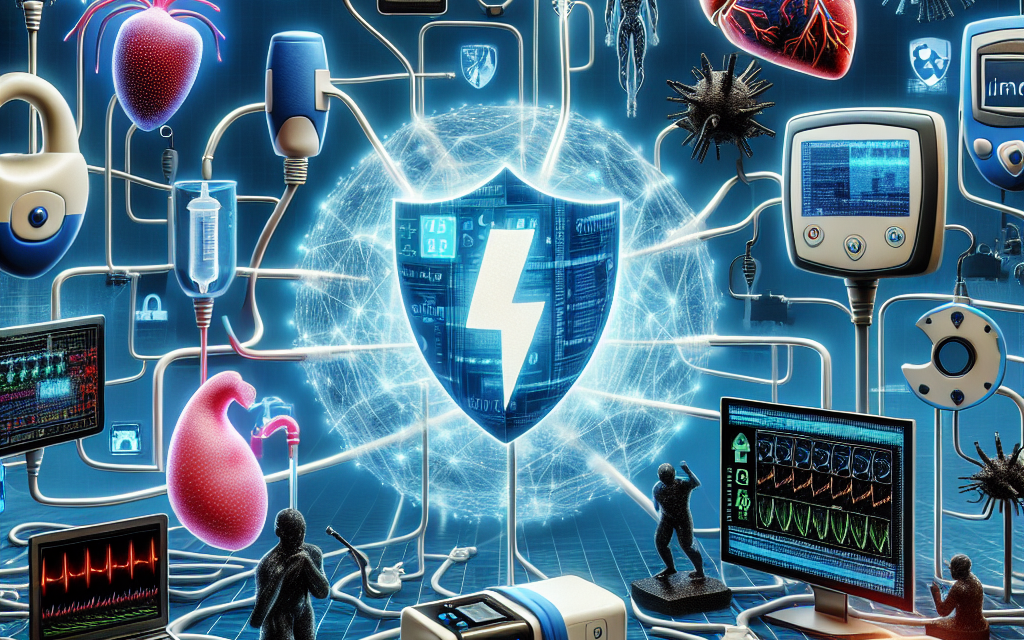IoT Security Risks Threaten Thousands of Medical Devices and Systems

The Internet of Things (IoT) has revolutionized the healthcare industry by connecting medical devices and systems, enhancing patient care, and streamlining operations. However, this connectivity also introduces significant security risks. As the number of IoT devices in healthcare continues to grow, so does the potential for cyber threats. This article explores the various security risks associated with IoT in healthcare, the impact on medical devices and systems, and strategies to mitigate these risks.
The Proliferation of IoT in Healthcare
The integration of IoT in healthcare has been transformative, offering numerous benefits such as improved patient monitoring, efficient data management, and enhanced diagnostic capabilities. IoT devices range from wearable health monitors to complex imaging systems, all of which contribute to a more connected and efficient healthcare environment.
According to a report by Allied Market Research, the global IoT healthcare market was valued at $113.75 billion in 2019 and is projected to reach $332.67 billion by 2027, growing at a CAGR of 13.2% from 2020 to 2027. This rapid growth underscores the increasing reliance on IoT technologies in healthcare settings.
However, the widespread adoption of IoT devices also presents significant security challenges. Many of these devices are not designed with security as a primary consideration, making them vulnerable to cyberattacks. The interconnected nature of IoT systems means that a breach in one device can potentially compromise an entire network, posing serious risks to patient safety and data integrity.
- Wearable devices: These include fitness trackers, smartwatches, and other health monitoring gadgets that collect and transmit patient data.
- Remote patient monitoring systems: These systems allow healthcare providers to monitor patients’ vital signs and health conditions from a distance.
- Smart medical devices: Devices such as insulin pumps, pacemakers, and infusion pumps that are connected to the internet for real-time monitoring and control.
- Healthcare management systems: Software platforms that integrate various IoT devices to streamline hospital operations and patient care.
- Telemedicine platforms: Systems that enable remote consultations and diagnostics, often relying on IoT devices for data collection and transmission.
Vulnerabilities in IoT Medical Devices
IoT medical devices are particularly vulnerable to cyber threats due to several factors, including inadequate security measures, outdated software, and lack of standardization. These vulnerabilities can be exploited by malicious actors to gain unauthorized access to sensitive data or disrupt critical healthcare services.
One of the primary security concerns is the lack of encryption in many IoT devices. Without proper encryption, data transmitted between devices and healthcare systems can be intercepted and manipulated by attackers. This can lead to data breaches, identity theft, and even life-threatening situations if critical medical data is altered.
Another significant vulnerability is the use of default passwords and credentials. Many IoT devices are shipped with default settings that are rarely changed by users, making them easy targets for hackers. In 2017, the FDA issued a warning about vulnerabilities in certain pacemakers that could be exploited to alter device settings, potentially putting patients at risk.
Additionally, the lack of regular software updates and patches leaves IoT devices exposed to known vulnerabilities. Manufacturers often prioritize functionality over security, resulting in devices that are not equipped to handle evolving cyber threats. This is particularly concerning in healthcare, where outdated software can compromise patient safety and data privacy.
Impact of IoT Security Breaches on Healthcare Systems
The impact of IoT security breaches on healthcare systems can be devastating, affecting not only the targeted devices but also the entire healthcare infrastructure. A successful cyberattack can disrupt hospital operations, compromise patient data, and erode trust in healthcare providers.
One of the most significant consequences of IoT security breaches is the potential for data breaches. Healthcare organizations store vast amounts of sensitive patient information, making them prime targets for cybercriminals. In 2020, the healthcare sector experienced a 55% increase in cyberattacks, with data breaches costing an average of $7.13 million per incident, according to IBM’s Cost of a Data Breach Report.
In addition to data breaches, IoT security vulnerabilities can lead to service disruptions. For example, a ransomware attack on a hospital’s IoT network could disable critical medical devices, delaying patient care and potentially resulting in adverse outcomes. In 2017, the WannaCry ransomware attack affected over 200,000 computers worldwide, including those in the UK’s National Health Service, leading to canceled appointments and delayed treatments.
Furthermore, IoT security breaches can undermine patient trust in healthcare providers. Patients expect their personal and medical information to be protected, and a breach can damage the reputation of healthcare organizations, leading to loss of business and legal repercussions.
Case Studies: Real-World Examples of IoT Security Breaches
Several high-profile cases have highlighted the vulnerabilities of IoT devices in healthcare and the potential consequences of security breaches. These incidents serve as cautionary tales for healthcare organizations and underscore the need for robust security measures.
In 2018, researchers discovered vulnerabilities in Medtronic’s CareLink 2090 pacemaker programmer, which could allow attackers to alter device settings remotely. Although there were no reported cases of exploitation, the incident raised concerns about the security of implantable medical devices and the potential risks to patient safety.
Another notable case occurred in 2019 when a vulnerability was found in the Philips Hue smart lighting system, which could be exploited to gain access to a hospital’s network. While the vulnerability was not specific to healthcare, it demonstrated how seemingly innocuous IoT devices could be used as entry points for cyberattacks.
In 2020, a ransomware attack on Universal Health Services, one of the largest healthcare providers in the US, disrupted operations across 400 facilities. The attack forced the organization to shut down its IT systems, delaying patient care and leading to significant financial losses. Although the attack did not specifically target IoT devices, it highlighted the potential impact of cyber threats on healthcare systems.
Strategies for Mitigating IoT Security Risks in Healthcare
To address the security risks associated with IoT in healthcare, organizations must implement comprehensive strategies that prioritize security at every stage of the device lifecycle. This includes adopting best practices for device management, network security, and data protection.
One of the most effective strategies is to implement strong authentication and access controls. This involves using unique credentials for each device, regularly updating passwords, and employing multi-factor authentication to prevent unauthorized access. Additionally, healthcare organizations should conduct regular security audits to identify and address vulnerabilities in their IoT networks.
Another critical measure is to ensure that all IoT devices are equipped with encryption capabilities. Encrypting data both in transit and at rest can protect sensitive information from interception and manipulation by attackers. Healthcare organizations should also work with device manufacturers to ensure that security patches and updates are applied promptly.
Network segmentation is another effective strategy for mitigating IoT security risks. By isolating IoT devices from critical systems and data, healthcare organizations can limit the potential impact of a security breach. This involves creating separate network segments for different types of devices and implementing firewalls and intrusion detection systems to monitor network traffic.
Finally, healthcare organizations should invest in cybersecurity training for staff to raise awareness of potential threats and promote best practices for device management and data protection. This includes educating employees about the risks of phishing attacks, the importance of regular software updates, and the need for strong password management.
Conclusion
The integration of IoT in healthcare offers significant benefits but also introduces substantial security risks. As the number of connected medical devices and systems continues to grow, so does the potential for cyber threats. Healthcare organizations must prioritize security at every stage of the device lifecycle, from design and manufacturing to deployment and maintenance.
By implementing robust security measures, such as strong authentication, encryption, network segmentation, and staff training, healthcare providers can mitigate the risks associated with IoT devices and protect patient safety and data integrity. As the healthcare industry continues to embrace IoT technologies, it is essential to remain vigilant and proactive in addressing the evolving cybersecurity landscape.





